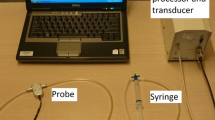Abstract
The aim of this study is to determine if the diagnostic accuracy of the supine empty stress test (SEST) differs depending on the volume of residual urine. We performed a review of all patients who were diagnosed with stress urinary incontinence (SUI) via multi-channel urodynamics including valsalva leak point determinations (VLPP). A SEST was performed and the residual urine recorded via catheterization. The test-specific indices of the SEST for the prediction of low VLPP (defined as <60 cm H20) were determined for varying residual volumes. Ninety-nine patients were included. Regardless of residual volume, low sensitivities, specificities and positive predictive values were demonstrated. Sensitivity and positive predictive values were further reduced and negative predictive values were improved slightly with higher residual volume. The highest negative predictive value was 89% at a residual volume of greater than 10 mL. Residual urine volume has minimal impact on the utility of the SEST.
Similar content being viewed by others
References
McLennan MT, Bent AE (1998) Supine empty stress test as a predictor of low valsalva leak point pressure. Neurourol Urodynam 17:121–127
Lobel RW, Sand PK (1996) The empty supine stress test and a predictor of intrinsic urethral sphincter dysfunction. Obstet Gynecol 88:128–132
Bump RC, Elser DM, Theofrastous JP, McClish DK (1995) Valsalva leak point pressures in women with genuine stress incontinence: reproducibility, effect of catheter caliber, and correlations with other measures of urethral resistance. Am J Obstet Gynecol 173:551–557
McGuire EJ, Cespedes RD, O’Connell HE (1996) Leak-point pressures. Urol Clin North Am 23:253–262
Faerber GJ, Vashi AR (1998) Variations in VLPP with increasing vesical volume. J Urol 159:1909–1911
Theofrastous JP, Cundiff GW, Harris RL, Bump RC (1996) The effect of vesical volume on Valsalva leak-point pressures in women with genuine stress urinary incontinence Obstet Gynecol 87:711–714
Pearson ES, Hartley HO, eds (1954) Biometrika tables for statisticians. University Press, Cambridge, pp 204–205
Wall LL, Wiskind AK, Taylor PA (1994) Simple bladder filling with a cough stress test compared with subtracted cystometry for the diagnosis of urinary incontinence. Am J Obstet Gynecol 17:1472–1477
Bowen LW, Sand PK, Ostergard DR, Franti CE (1989) Unsuccessful Burch retropubic urethropexy: a case-controlled urodynamic study. Am J Obstet Gynecol 160:452–458
Quadri G, Magatti F, Belloni C, Barisani D, Natale N (1999) Marshall-Marchetti-Krantz urethropexy and Burch colposuspension for stress urinary incontinence in women with low pressure and hypermobility of the urethra: early results of a prospective randomized clinical trial. Am J Obstet Gynecol 18:12–18
Hsieh GC, Klutke JJ, Kobak WH (2001) Low valsalva leak-point pressure and success of retropubic urethropexy. Int Urogynecol J 12:46–50
Author information
Authors and Affiliations
Corresponding author
Additional information
The opinions and conclusions in this article are those of the authors and are not intended to represent the official position of the Department of Defense, United States Air Force, or any other government agency.
Editorial Comment: The authors attempt to answer a clinically relevant question regarding the diagnostic accuracy of supine empty cough test at different residual volumes. They conclude that urinary residual volume has no impact on the utility of this screening test. The study design was not optimal to come to the above conclusion. However, they reaffirm the high negative predictive value of supine empty stress test found in some previous studies. This study further establishes the usefulness of this test as a simple office screening test for intrinsic sphincter deficiency. This test should be incorporated as part of a routine office evaluation of stress urinary incontinence in general gynecology clinics and could be used as a criterion for further testing or a referral.
Rights and permissions
About this article
Cite this article
Walter, A.J., Thornton, J.A. & Steele, A.C. Further characterization of the supine empty stress test for predicting low valsalva leak point pressures. Int Urogynecol J 15, 298–301 (2004). https://doi.org/10.1007/s00192-004-1172-6
Received:
Accepted:
Published:
Issue Date:
DOI: https://doi.org/10.1007/s00192-004-1172-6




